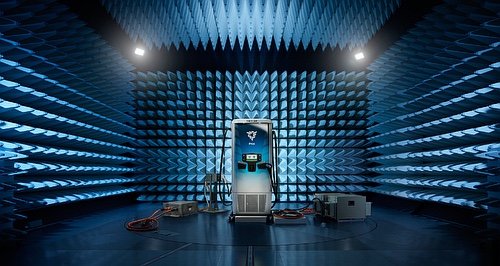Qld based Tritium placed into receivership

NASDAQ-listed Brisbane technology and EV charger manufacturing company Tritium has tanked, with McGrath-Nicol Restructuring appointing partners Shaun Fraser, Katherine Sozou, Matthew Hutton, and Jamie Harris as receivers.
The receivers were appointed a day after Tritium’s board determined that the business and three of its Australian subsidiaries, Tritium Pty Ltd, Tritium Holdings Pty Ltd, and Tritium Nominee Pty Ltd were “insolvent or likely to become insolvent”, calling in KPMG as voluntary administrators.
Attempts to find a buyer for Tritium initially yielded several potential suitors all of which pulled the pin last week as the company’s lenders pushed Tritium into receivership. McGrath-Nicol partner and receiver, Shaun Fraser said they’ll look to find a buyer.
“Our immediate focus is to stabilise operations and work closely with Tritium’s employees, customers and suppliers as we attempt to secure the best possible outcome for all parties,” he said.
“A sale process for Tritium’s business and assets was underway prior to our appointment – we will be re-engaging as a matter of urgency with interested parties and the broader market to seek to find a long-term capital and/or ownership solution for Tritium.”
Once a darling of Australian manufacturing, specialist media outlets including Aumanufacturing and Startupdaily lifted the lid on Tritium’s travails, saying its fall has been equally precipitous since rapidly expanding and listing in the US – a symptom being the collapse in the company’s share price from over $US200 ($A303) in September 2023 to $US3.64 ($A5.69) before the receivers moved in.
At one stage Tritium was worth more than $US2 billion ($3.03b) as a listed company, but more recently its shares had plunged amid capital concerns, and the business had a market capital of less than $US4 million ($A6.2m).
Tritium was viewed as an Australian success story and was once ranked among the world’s best-selling fast charger makers but according to website Startupdaily, it seems likely a too rapid expansion, a lack of understanding of the realities of manufacturing in the US, an inability to make a profit even when producing chargers at scale and reliability issues combined leading to the demise of the business.
“How the company came to this will be written about for many years – how a manufacturer had a 75 per cent market share in electric vehicle chargers in Australia, and ranked number one in the US and number three in Europe faltered during a time of rising EV sales is bound to be a case study in every management course,” the website commented.
Tritium was originally producing EV chargers at a Brisbane factory employing up to 600 people but moved to list on the US NASDAQ exchange concurrent with building a large new factory in Lebanon, Tennessee which was expected to house up to six charger production lines.
Reports say the company grew fast after moving to the US in 2021 motivated by the larger market and subsidies luring manufacturing to the US through the US Buy America Act and Federal Highway Administration (FHWA) requirements for domestic sourcing.
“Record production was achieved in May 2023 and a claim was issued that with US production rising, Tritium now had the largest charger production plans of any company outside China,” reported Startupdaily.
“The company set a new production record then, with preliminary results from January 1, 2023 to April 30, 2023 of approximately 3200 units, and revenue of $57 million in the year to date,” it stated.
“But Tritium was making losses on the chargers it produced so getting bigger only increased the problem, and there were also complaints of unreliability issues with their chargers.”
The company was in trouble in October last year seeking a $90 million bailout from the Queensland government while courting federal funding simultaneously neither with any success.
In November CEO Jane Hunter said: “While we continue to build on our recently reported financial results, which include achieving record revenue and gross margin, strategic restructuring of our business is necessary to drive both profitability and shareholder value”.
Later that month, Tritium announced the closure of its Brisbane factory by Christmas (2023) with the loss of 400 jobs and despite consolidation in the US and a ‘change program’ failed to forge a path to becoming EBITDA positive.
Exacerbating its problems, Tritium has been in dispute with NASDAQ to retain its listing after failing to meet the minimum 1.1 million publicly held shares requirements which was the final straw that initiated its financial collapse.
It seems Tritium was too ambitious and pushed too hard for growth too quickly coupled with peripheral problems such as discounting and product reliability issues.